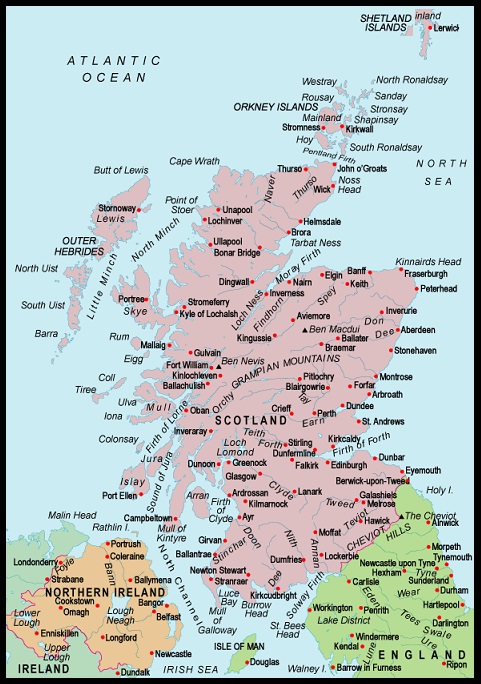The Northern Isles are made up of the Orkney and Shetland Islands. While Orkney is a mere six miles from the northern part of Scotland's mainland, it is separated from it by the Pentland Firth, one of the most turbulent parts of water in the British Isles. In general, the Northern Isles comprise the country's most remote islands.
The Western Isles are known for their rugged, natural beauty, as well as for the incredible diversity between them. You can find rugged seacoast, mountainous areas, glens, and lochs, as well as hills and moors, on the Western Isles.
The Highlands include the lands and islands north of the Highland Boundary Fault. The great mountain ranges lie in the middle and west of the region, while the east coast is relatively flat. The Lowlands and Borders are a series of flat lands and coastal areas along Scotland's northern coast.
Glasgow is Scotland's largest city, and holds more than 40 percent of the country's inhabitants. Edinburgh is the country's second-largest city, as well as its capital.
Visitors to Scotland are drawn to its beauty, mystery, and romance, which have been touted and kept alive by writers, poets, artists, and balladeers.
Especially popular among visitors are the islands, which offer escape from the mainland and the ability to enjoy beautiful natural scenery.
 Scotland is divided into nine regions: Dumfries & Galloway, Strathclyde, Central, Highlands & Islands, Grampian, Tayside, Fife, Lothian, and Borders. In addition, Scotland can generally be divided into four geographical areas: the Northern Isles, the Western Isles, the Highlands, and the central Lowlands and Borders.
Scotland is divided into nine regions: Dumfries & Galloway, Strathclyde, Central, Highlands & Islands, Grampian, Tayside, Fife, Lothian, and Borders. In addition, Scotland can generally be divided into four geographical areas: the Northern Isles, the Western Isles, the Highlands, and the central Lowlands and Borders.